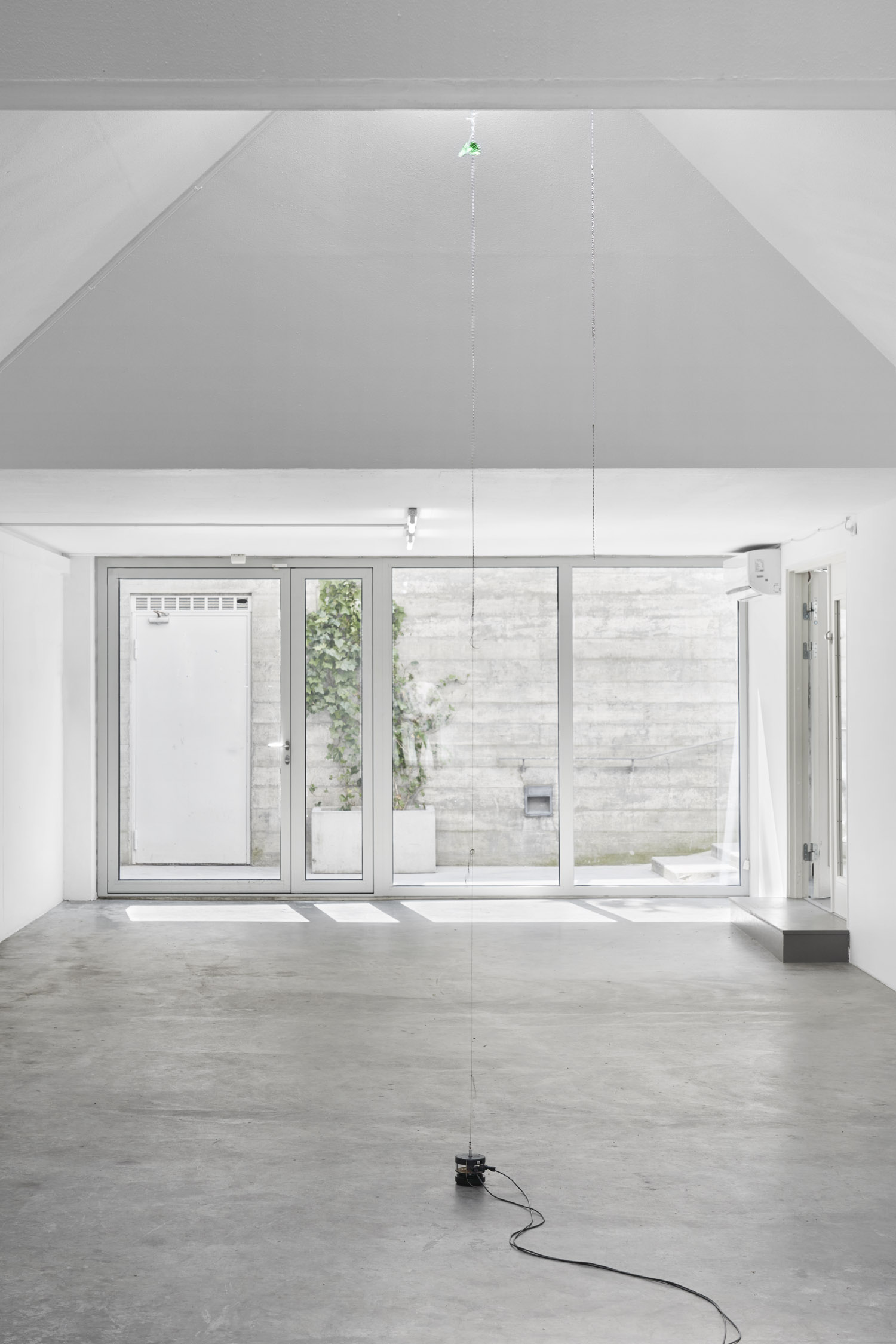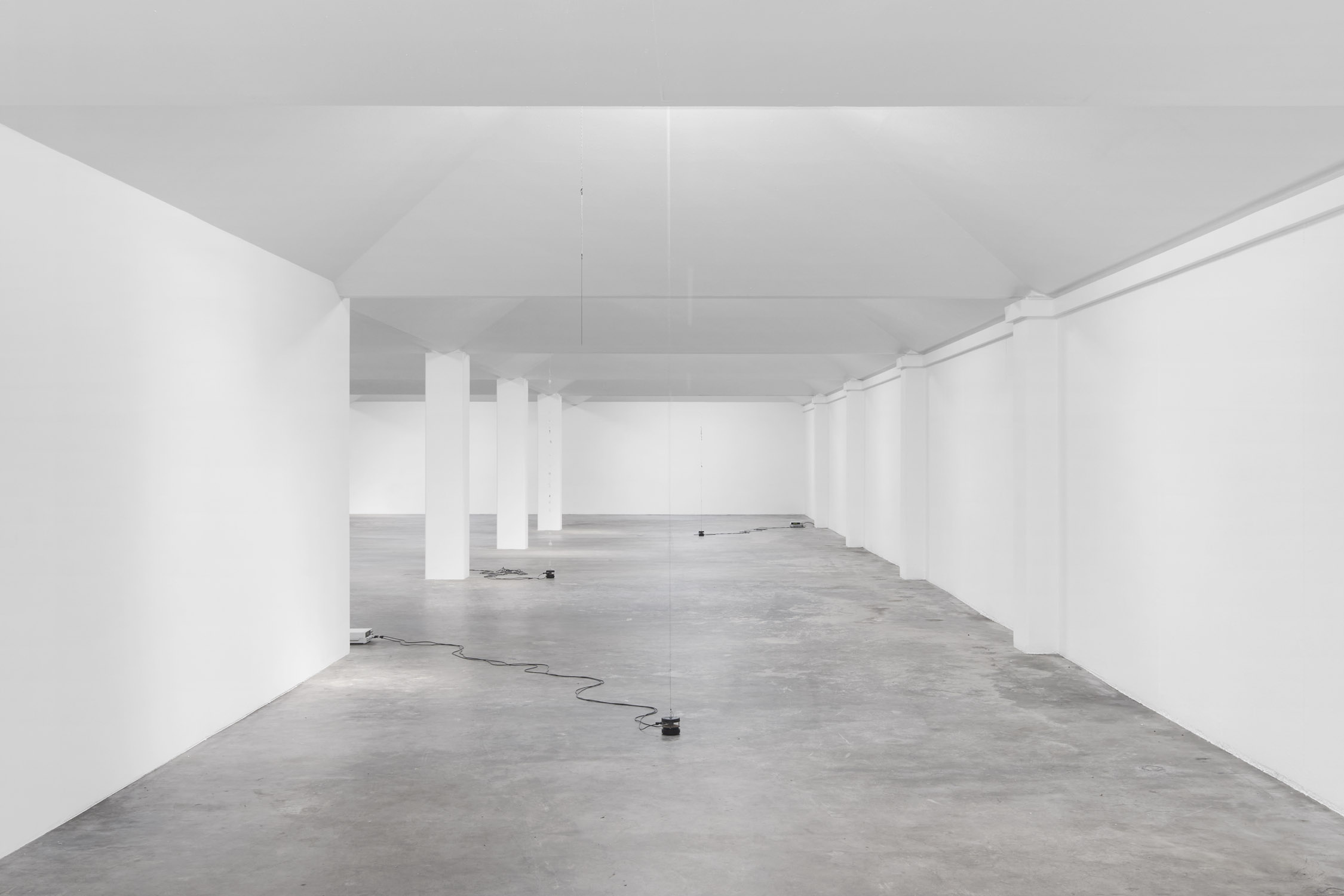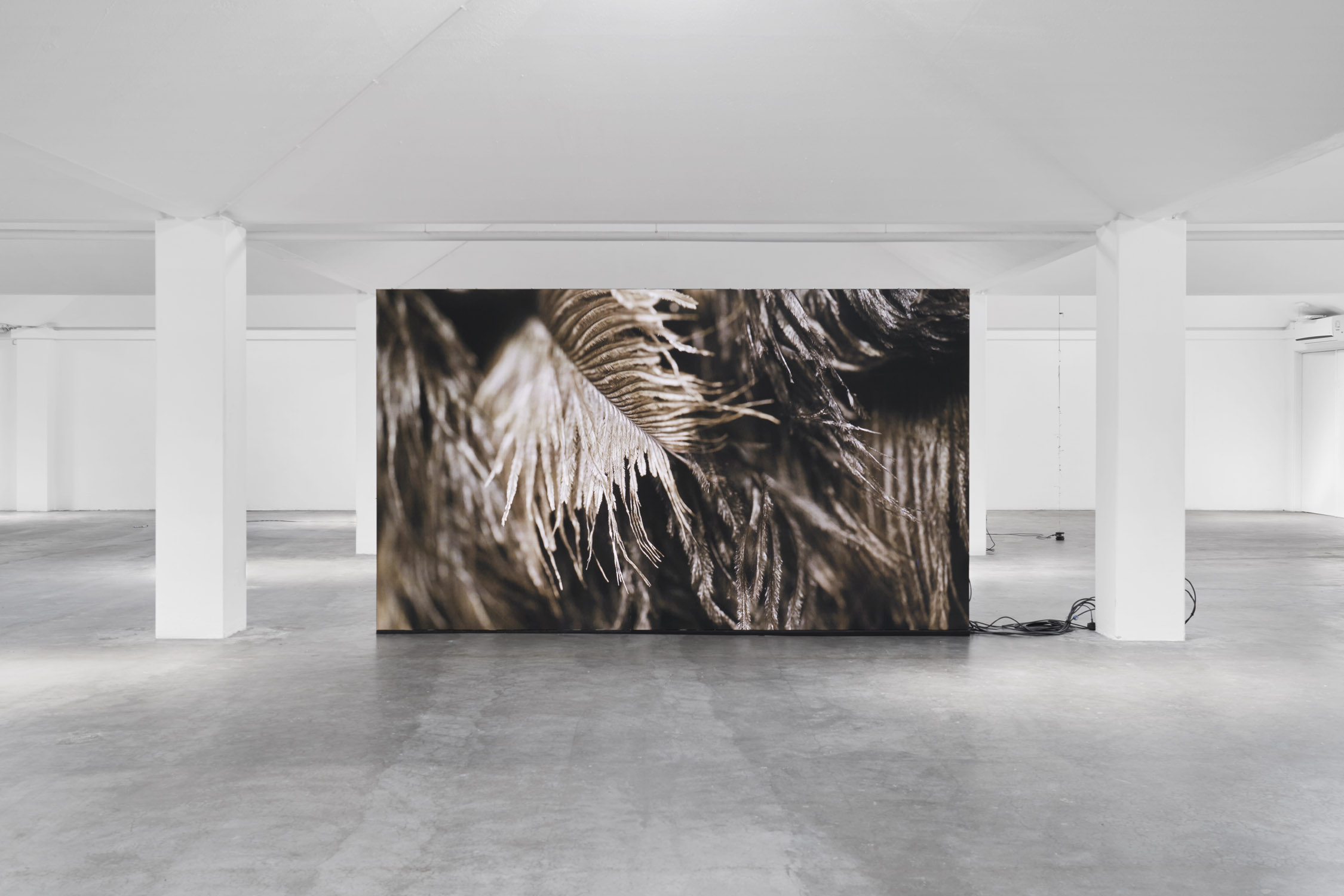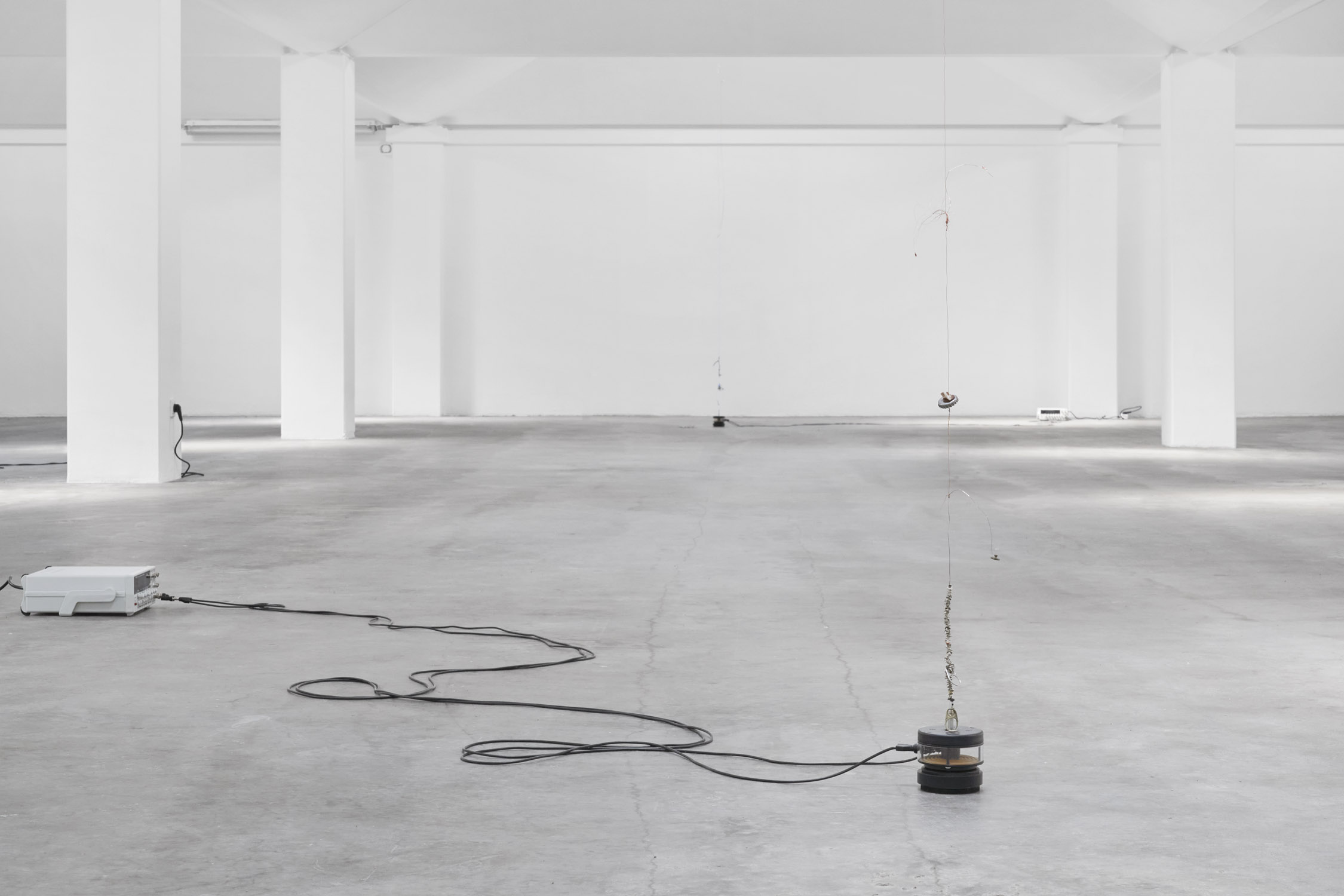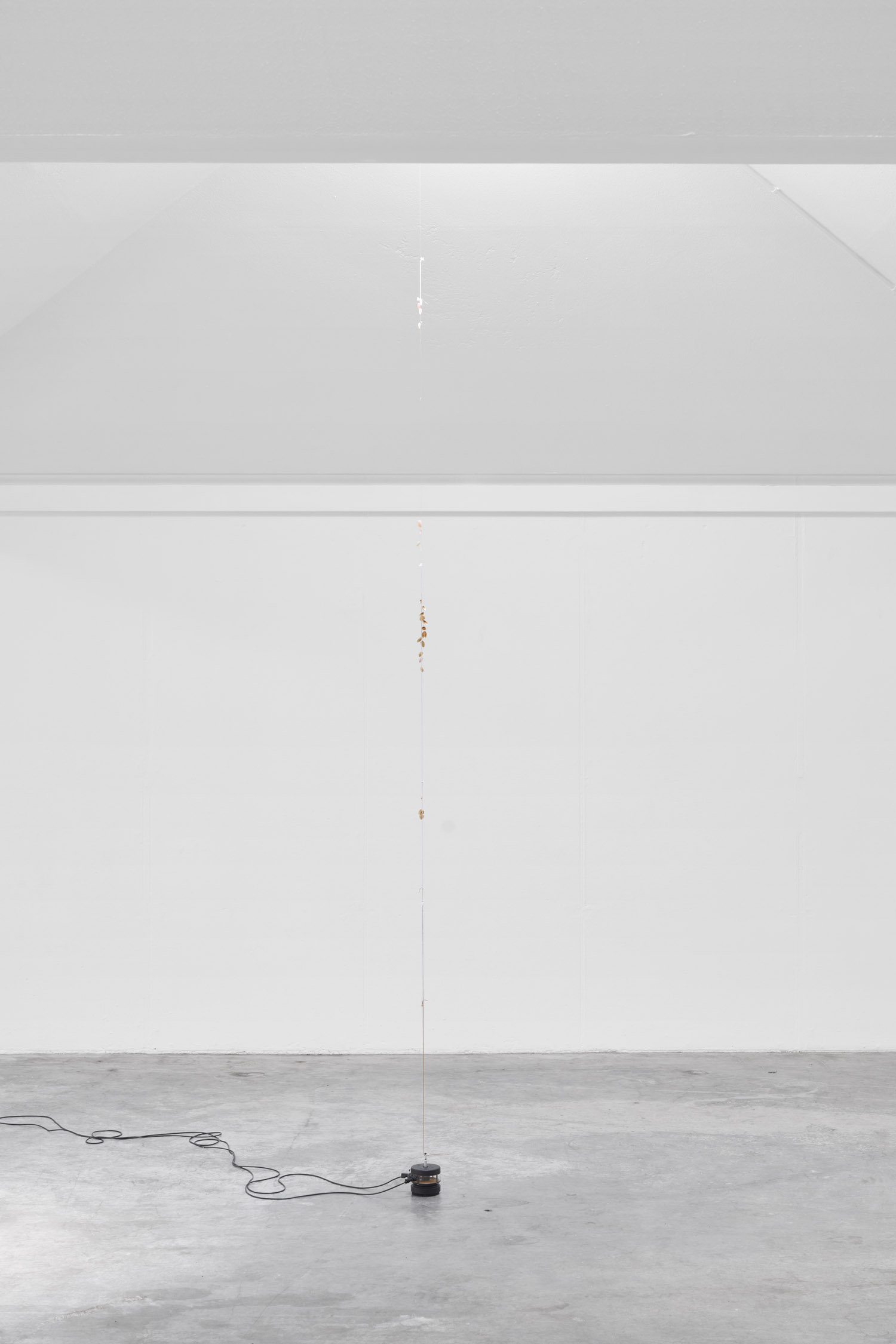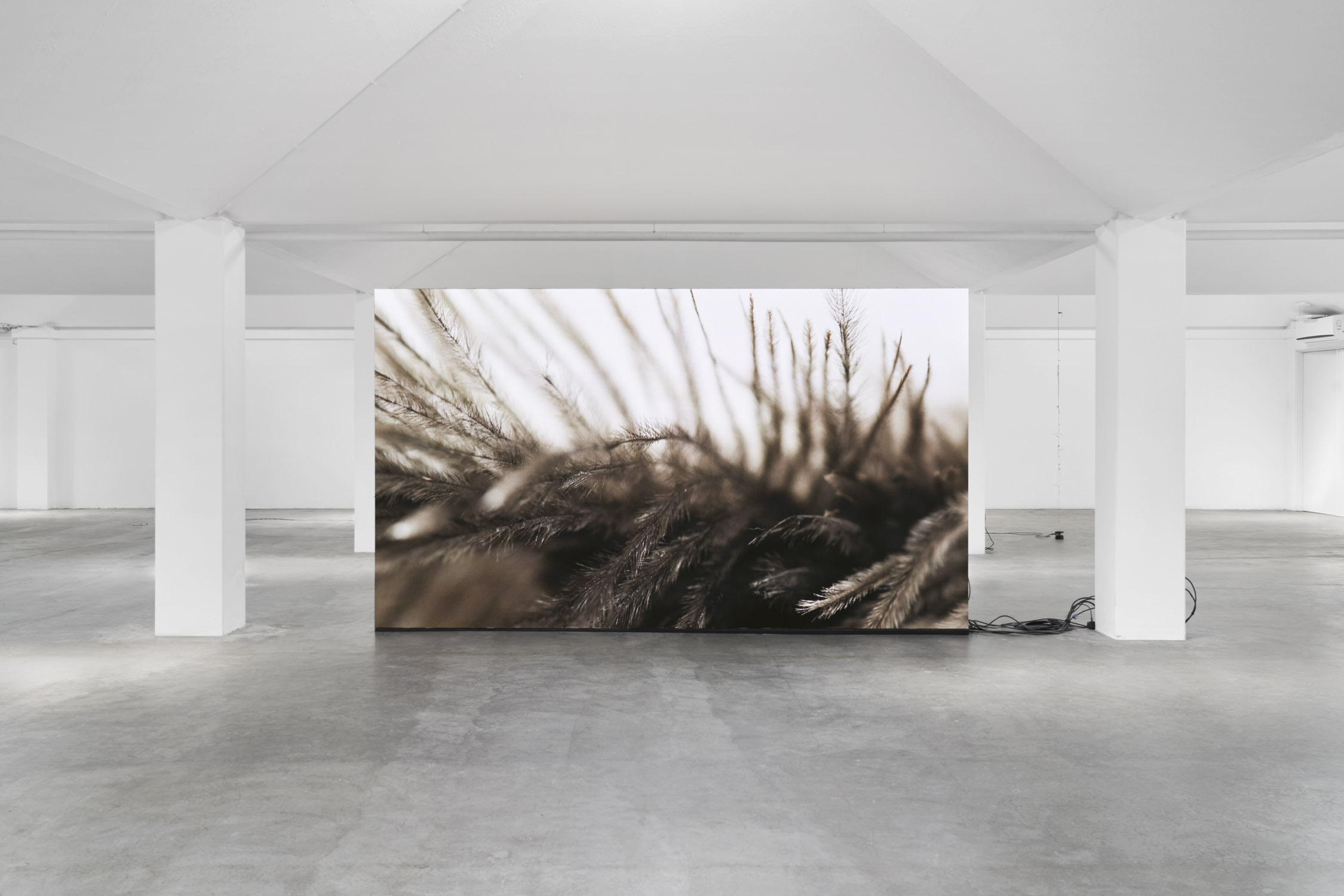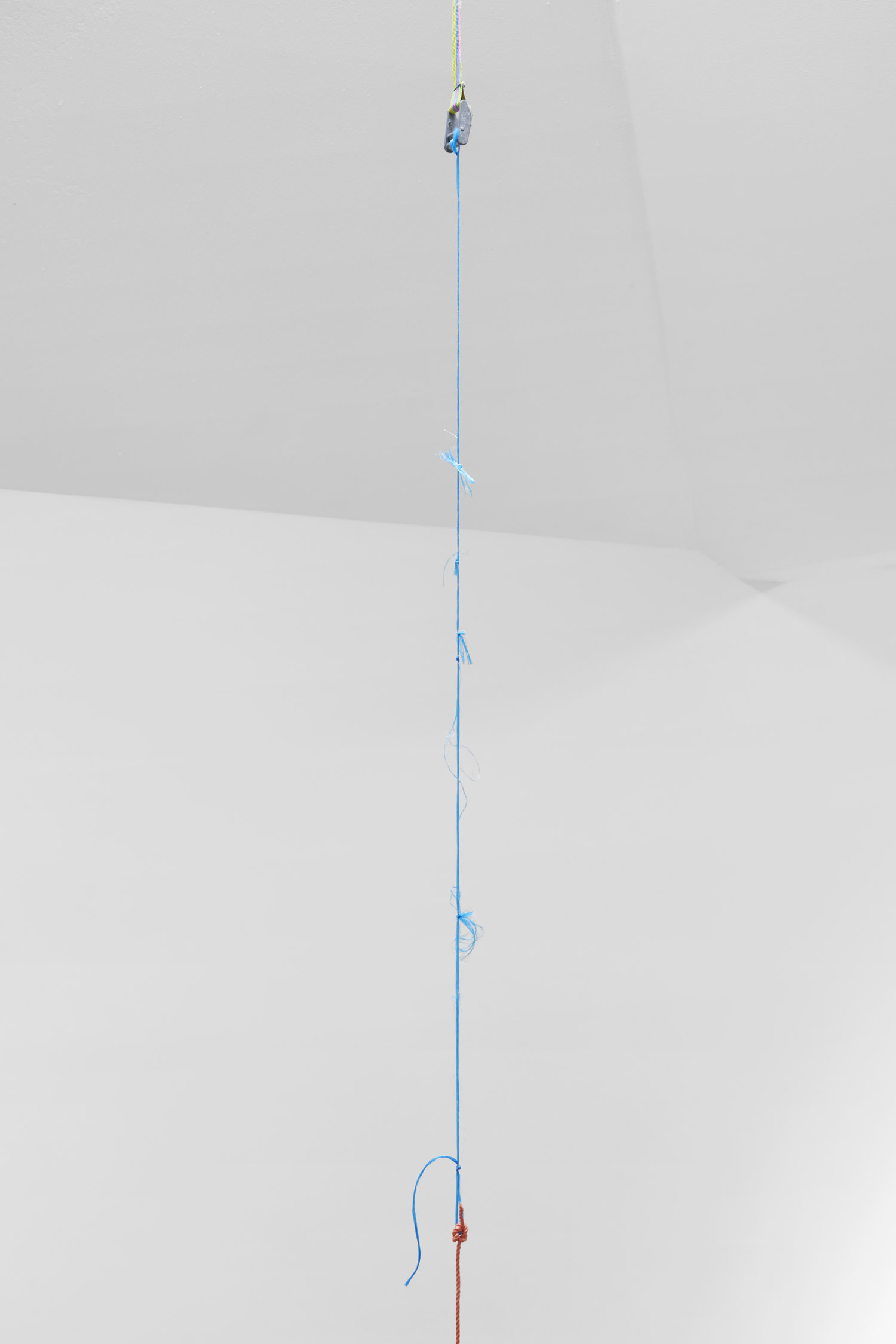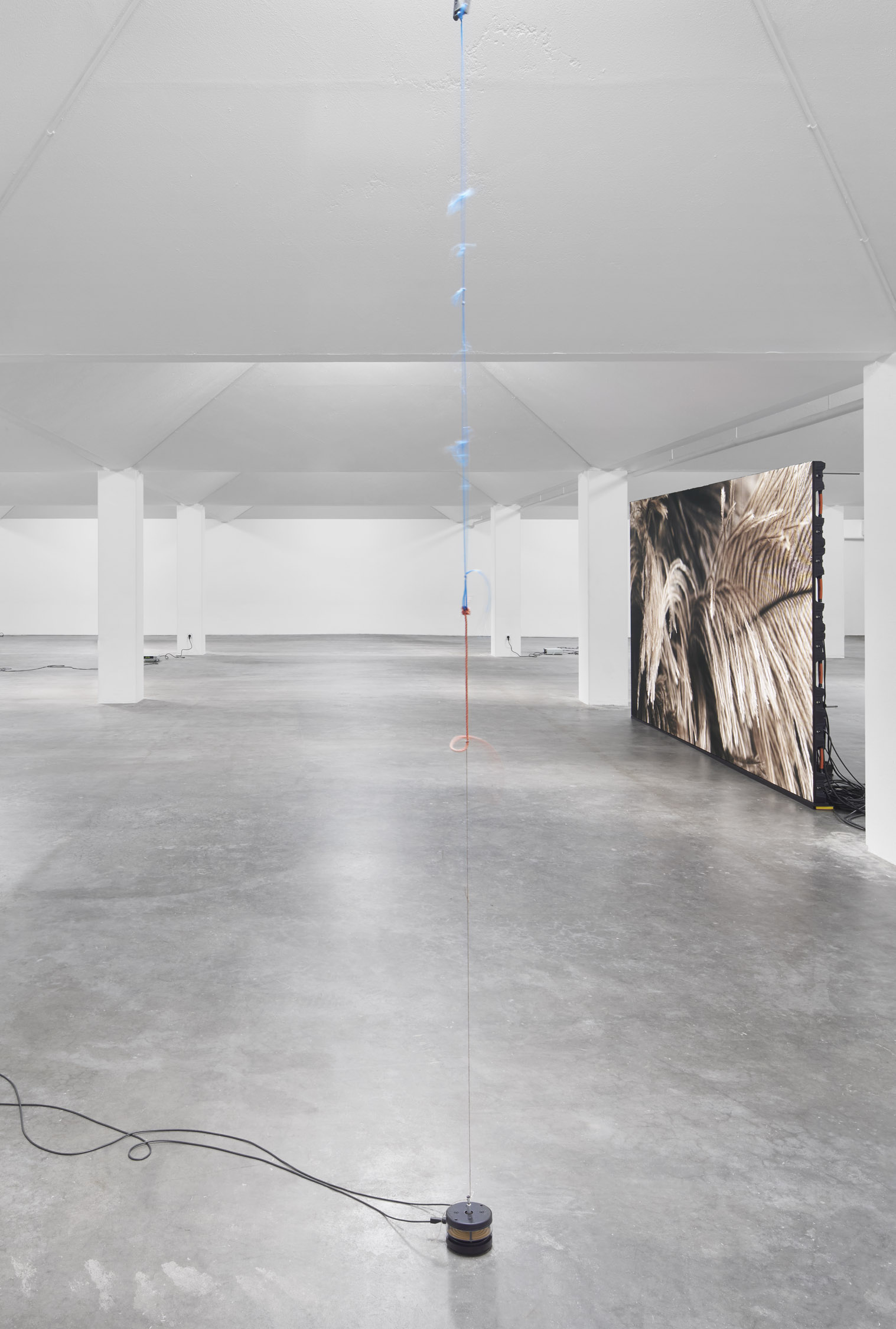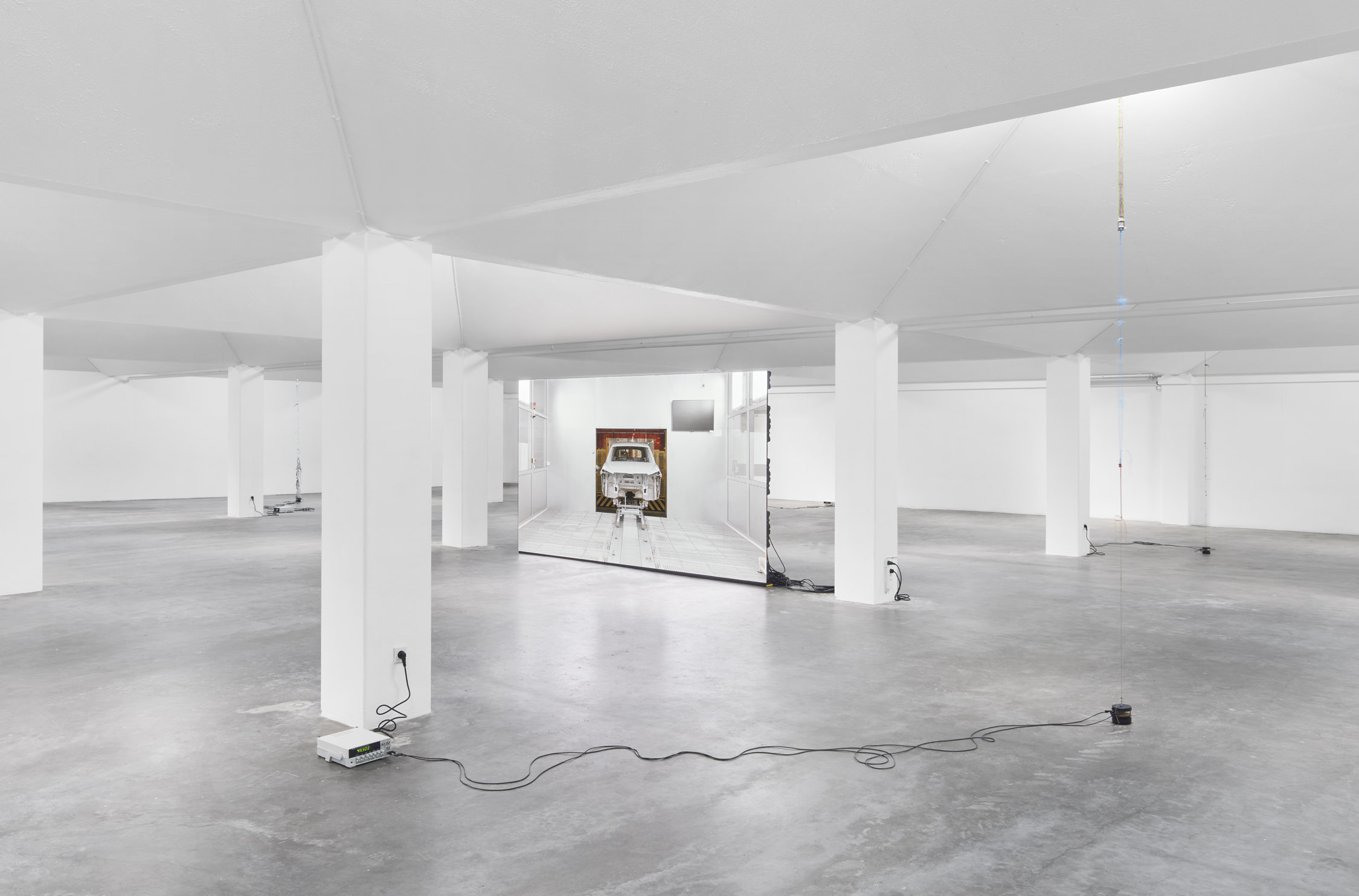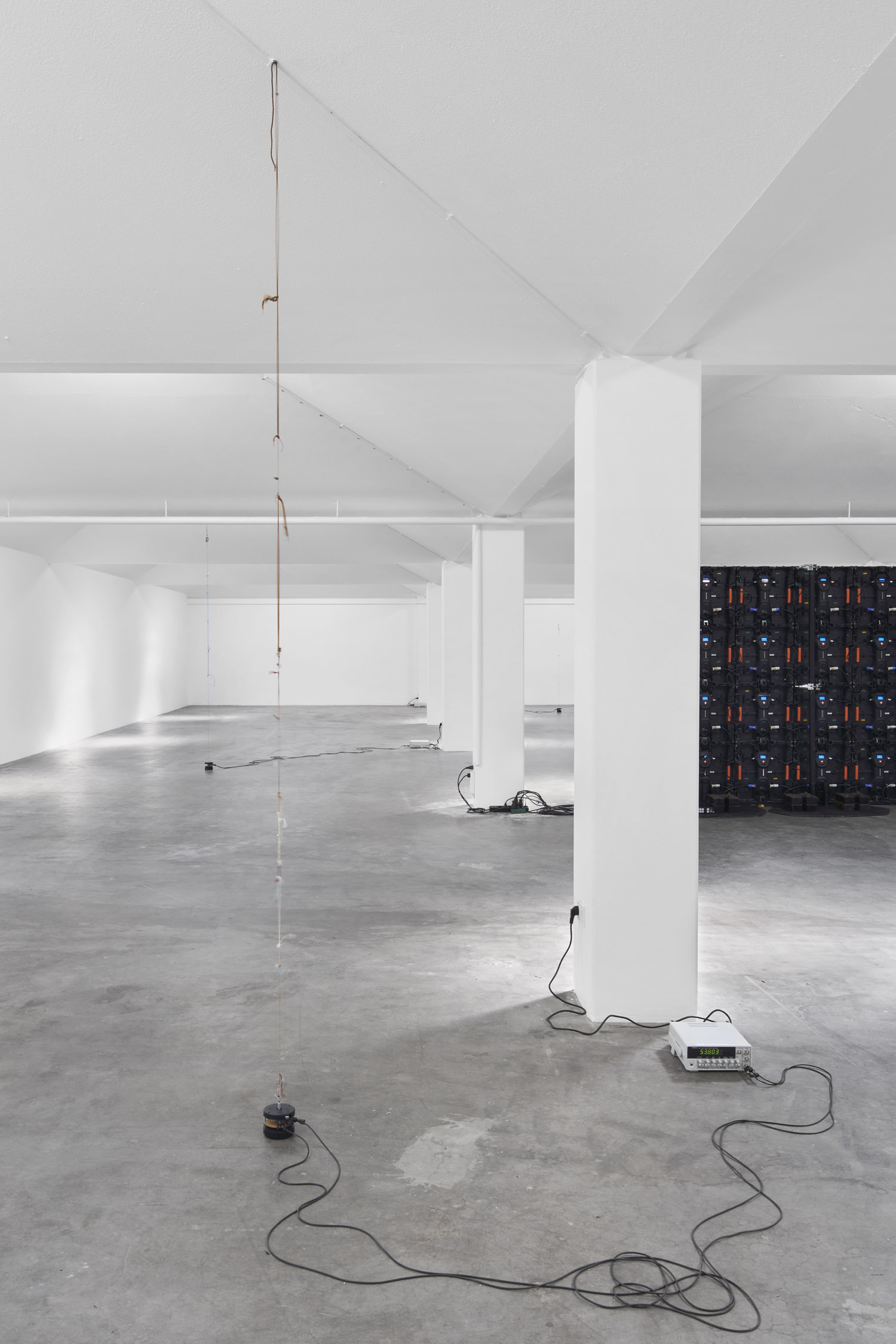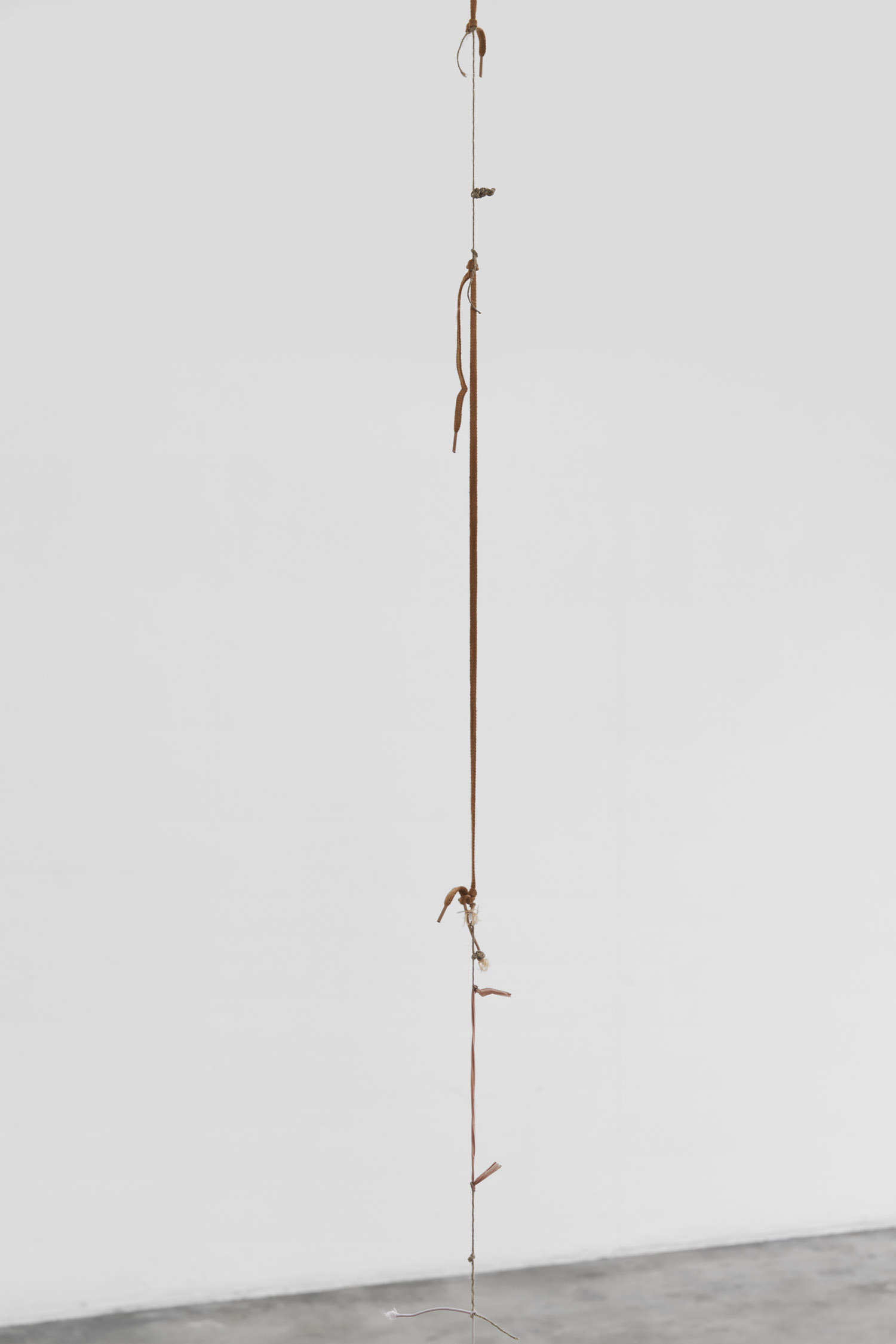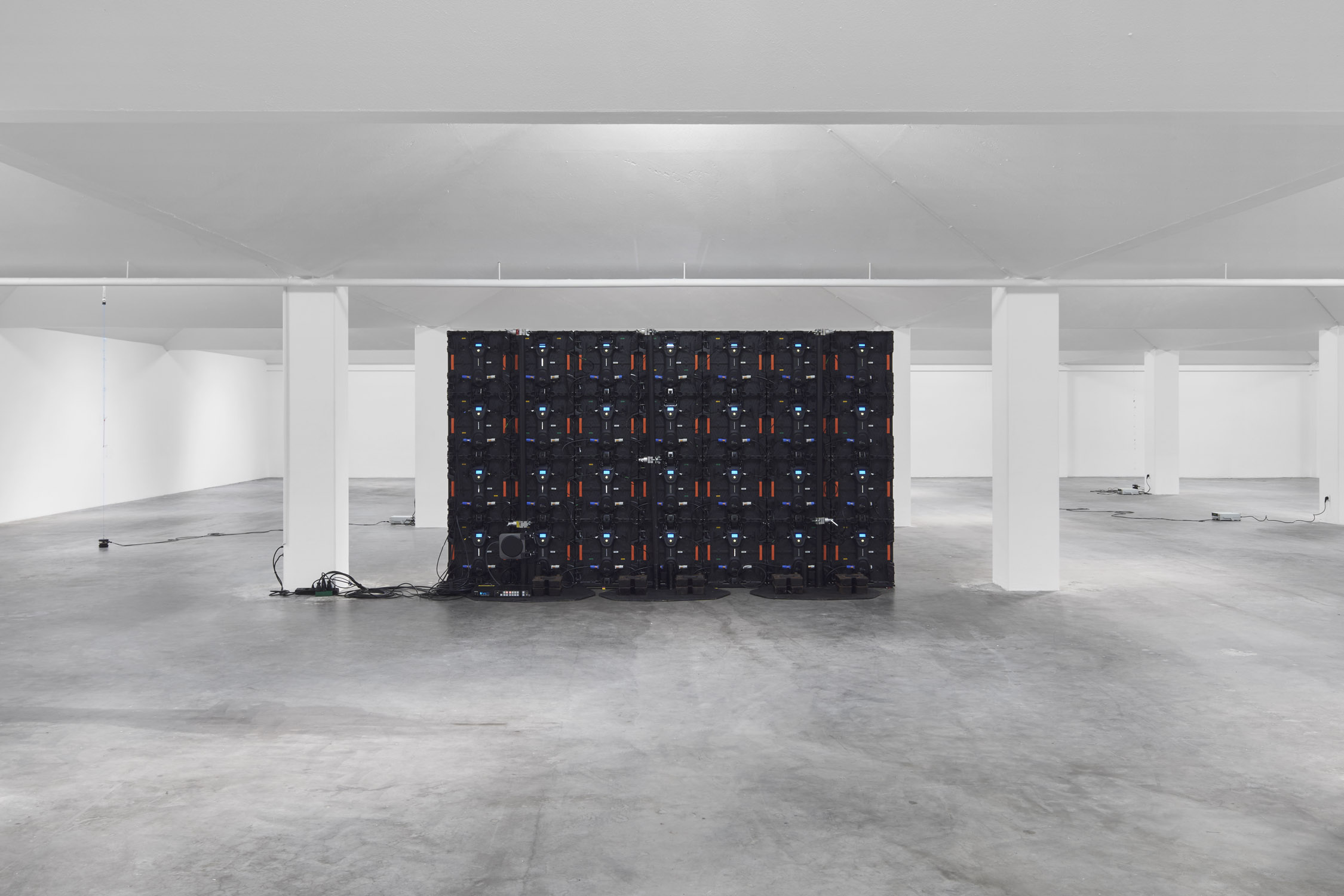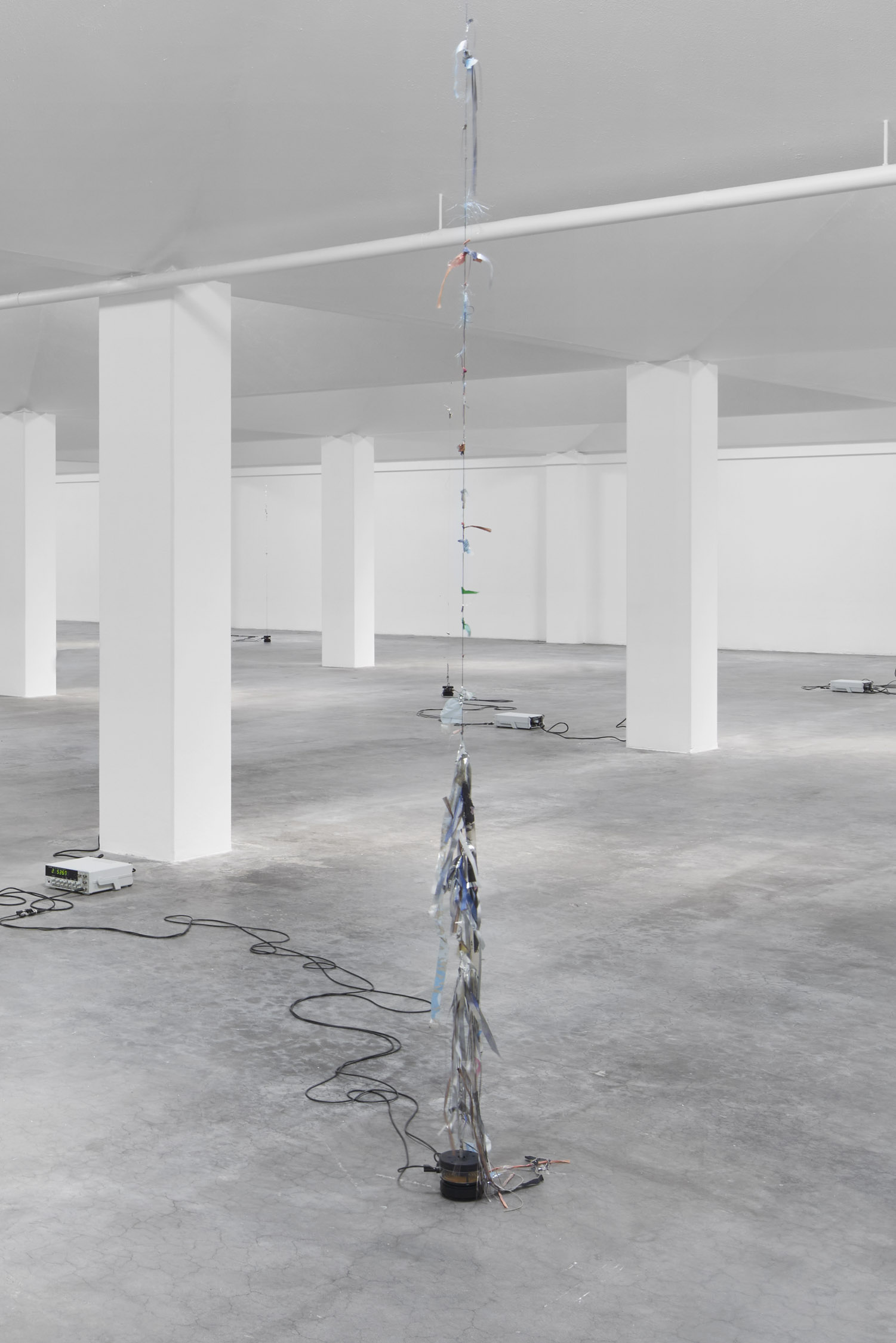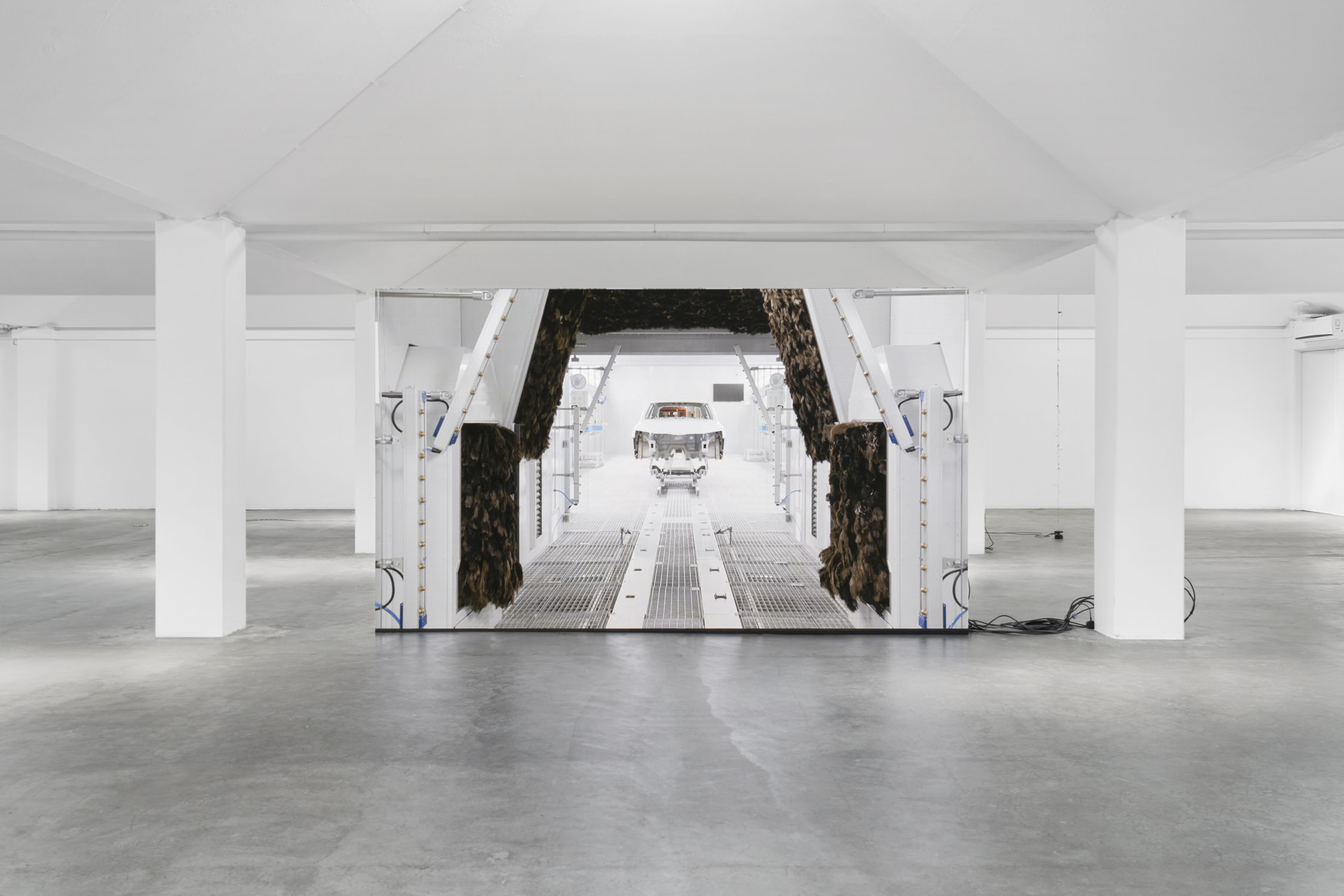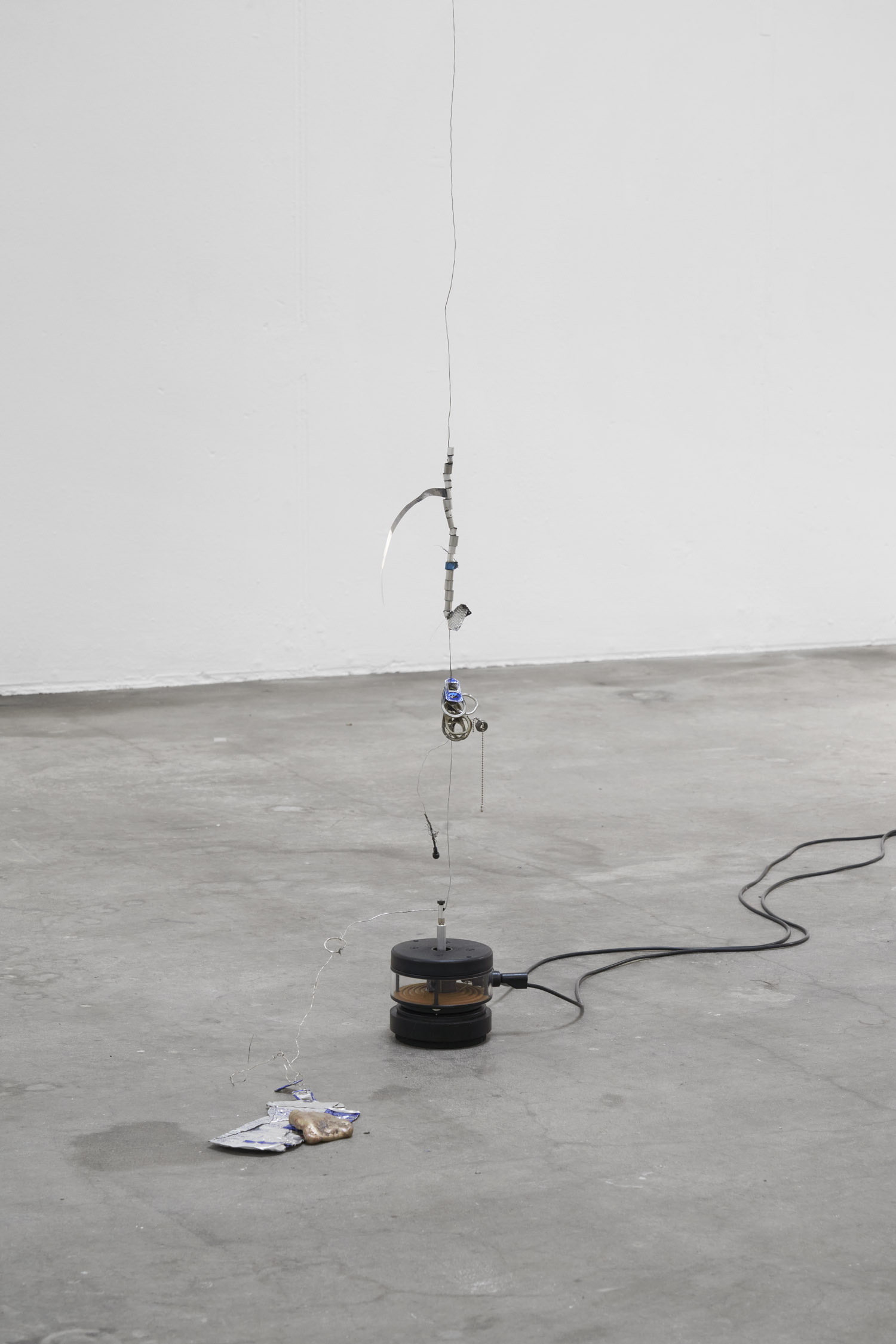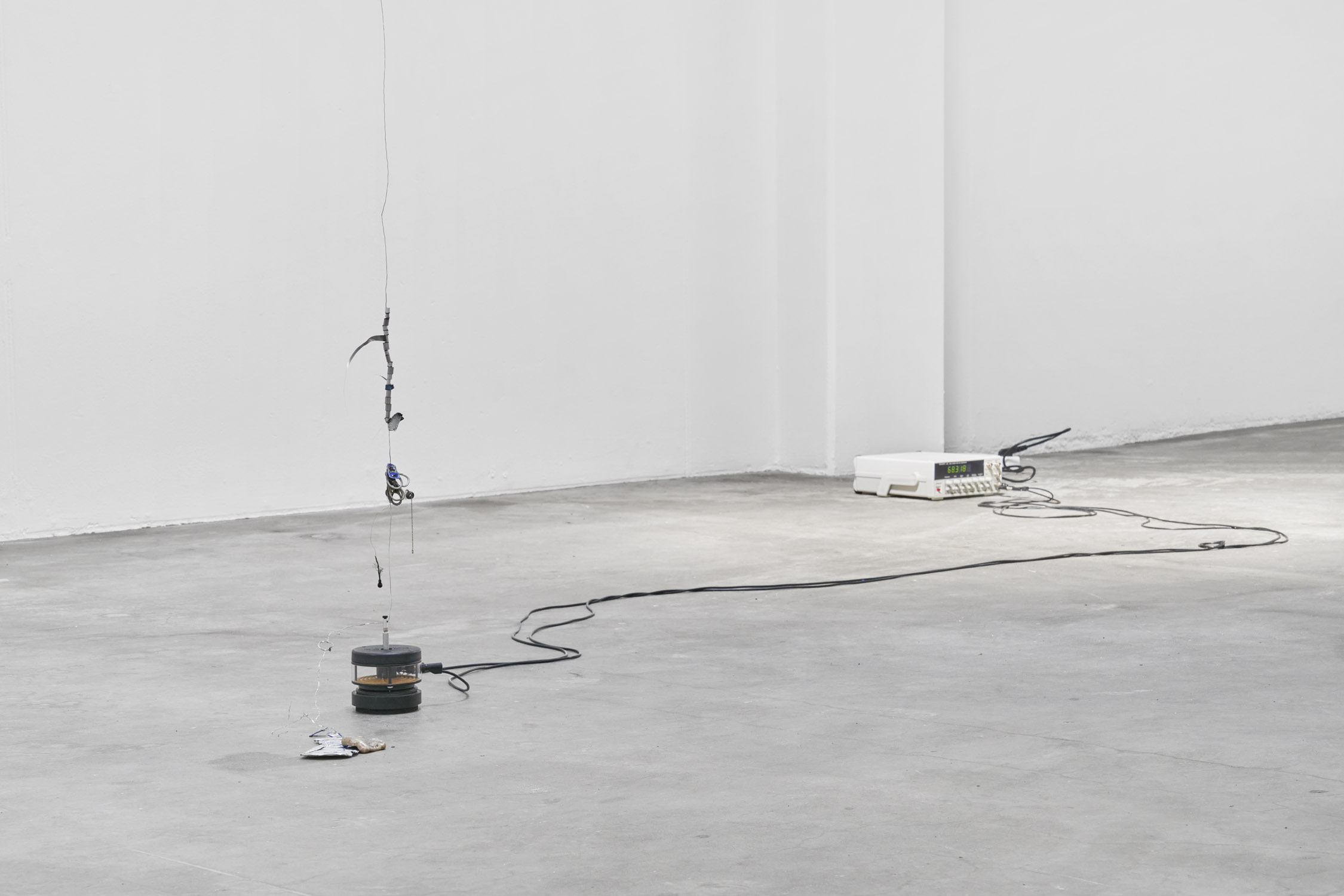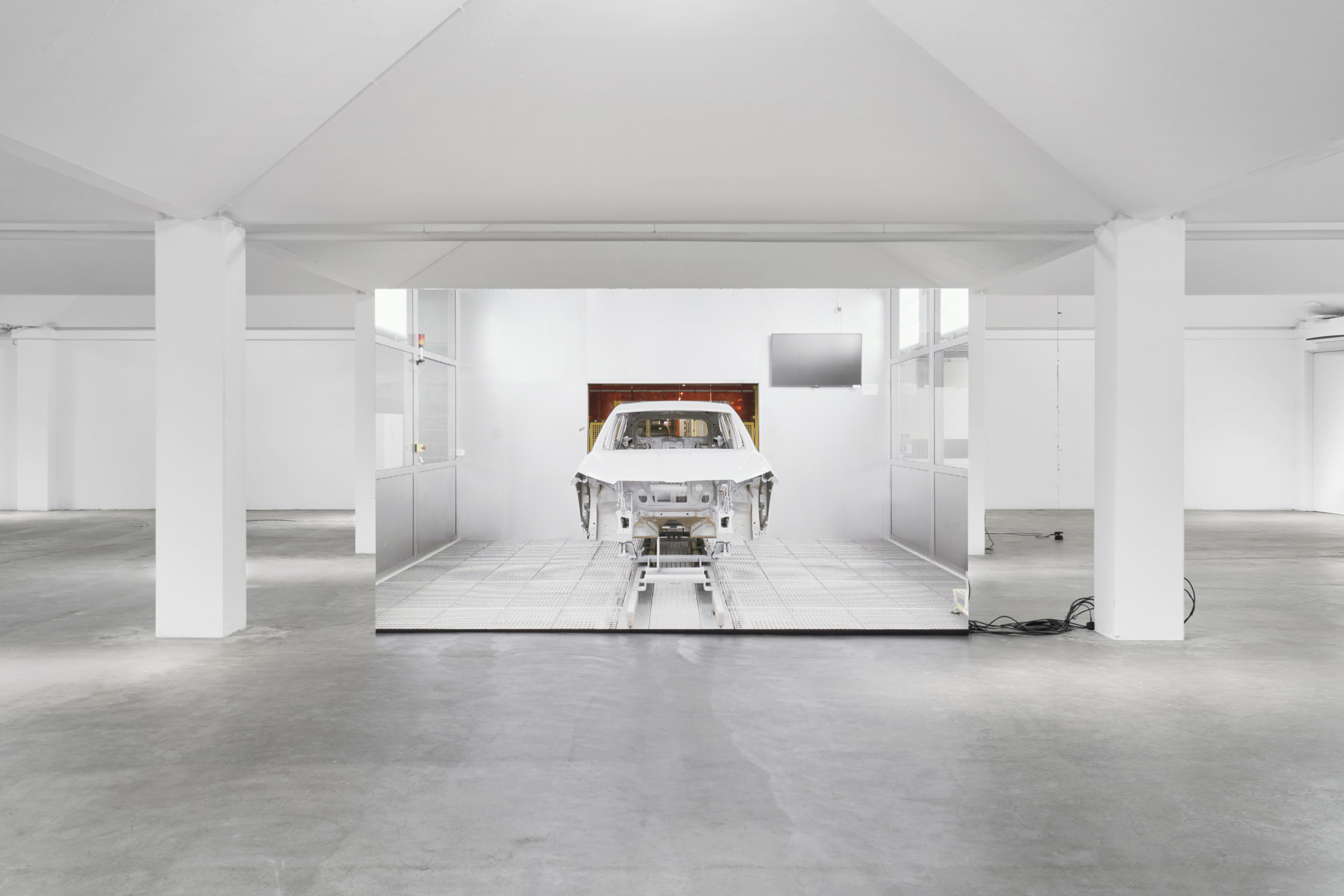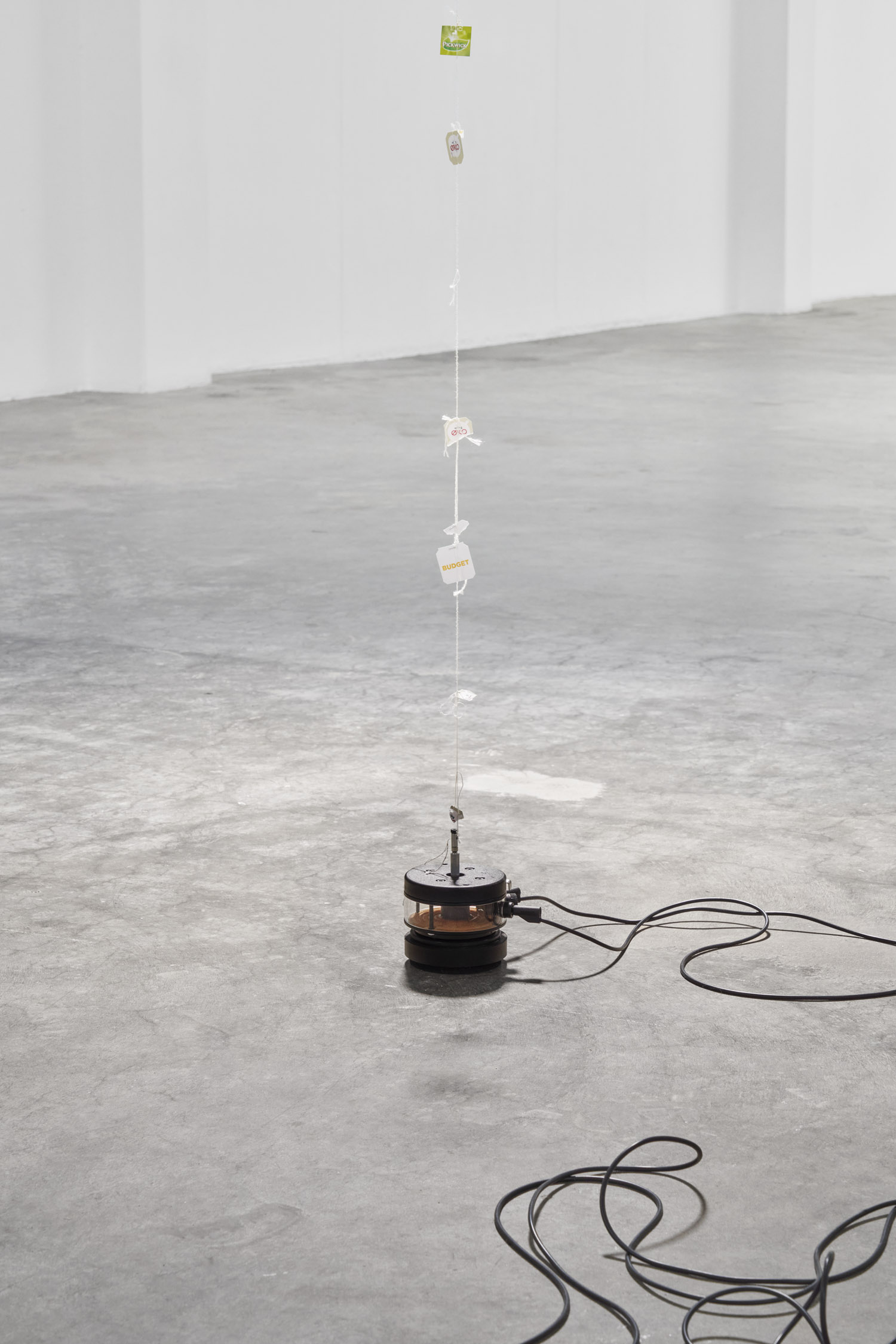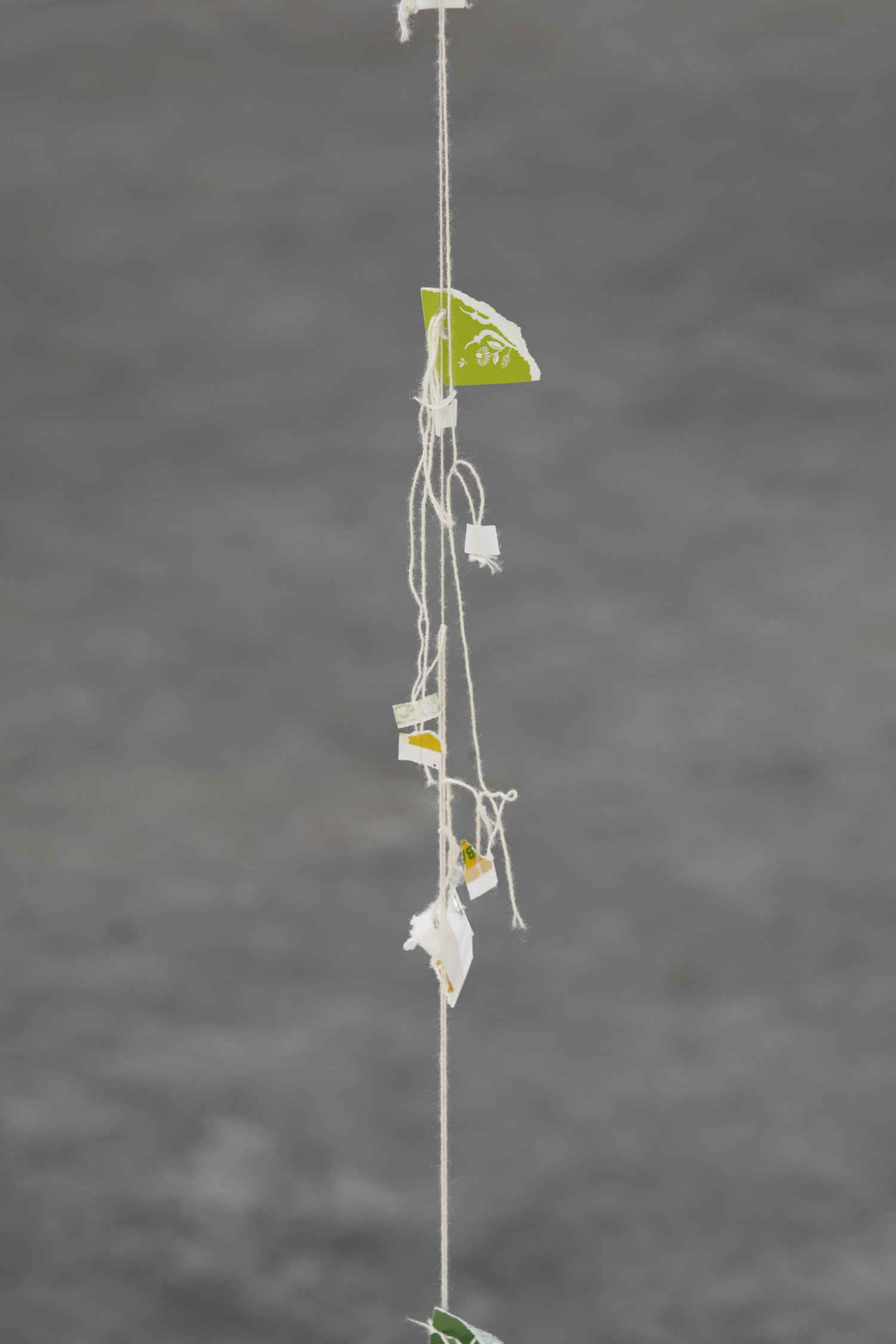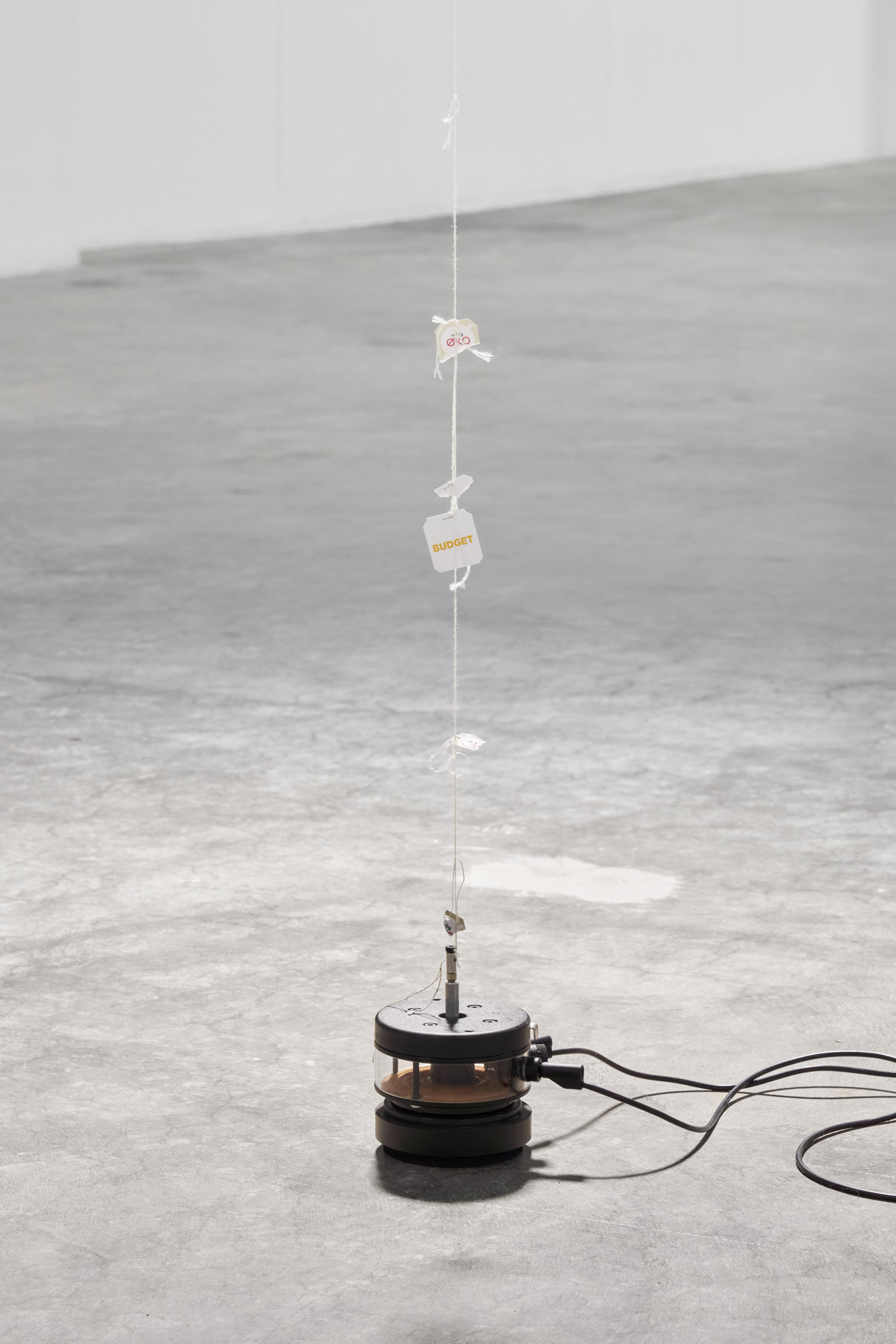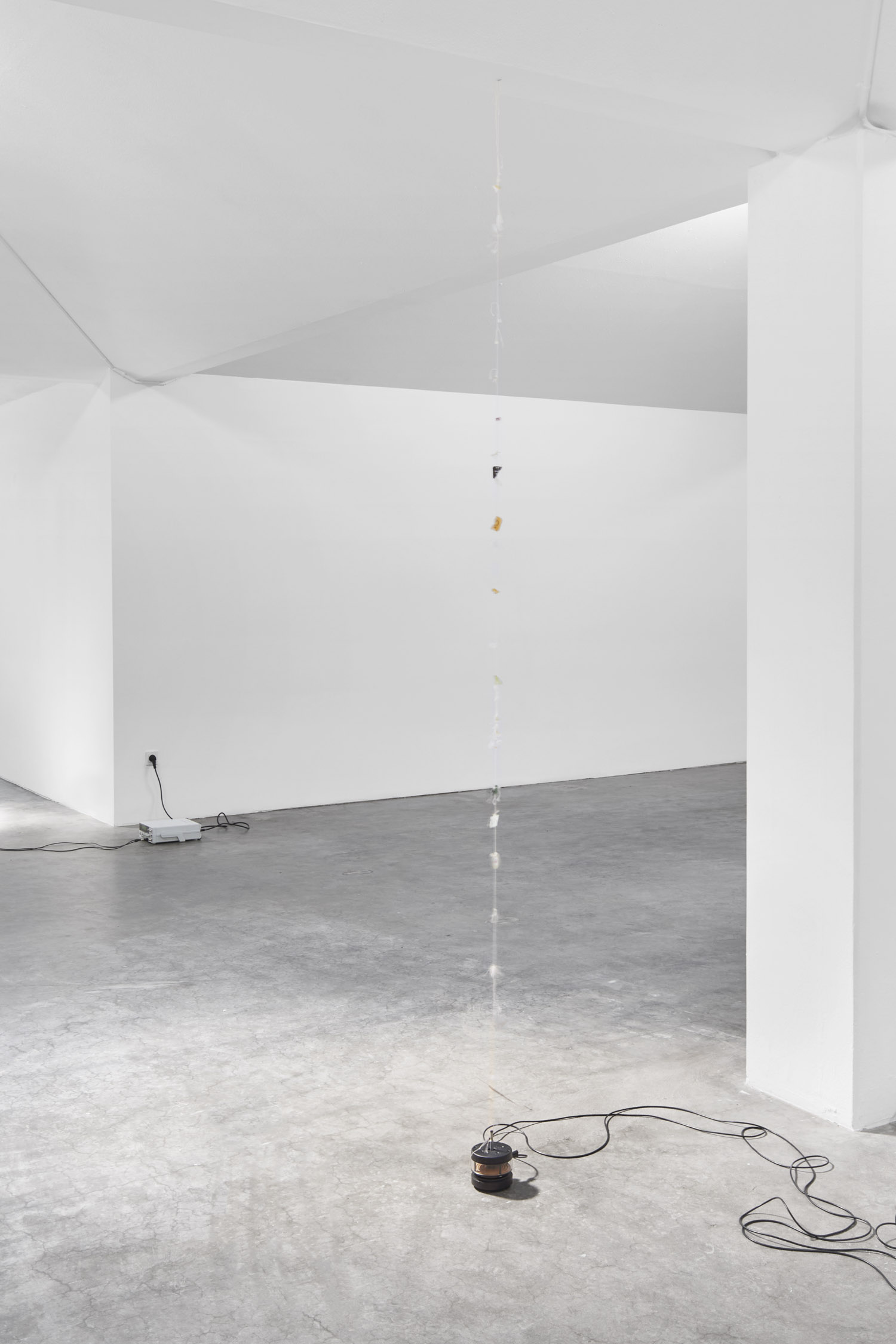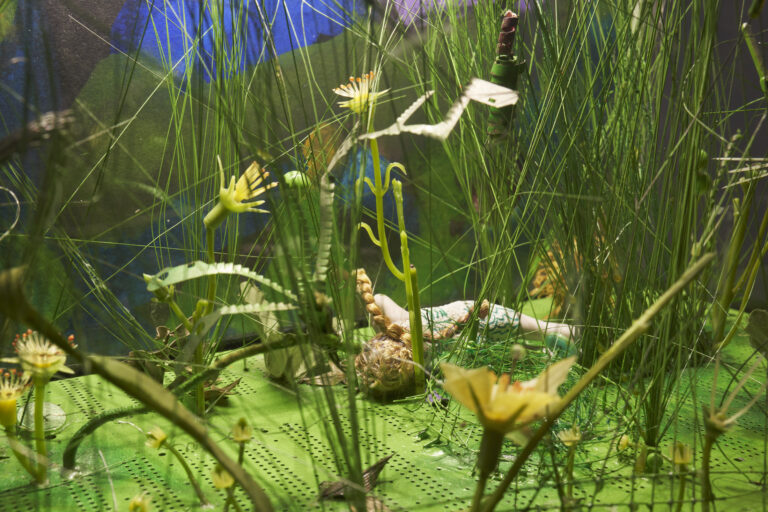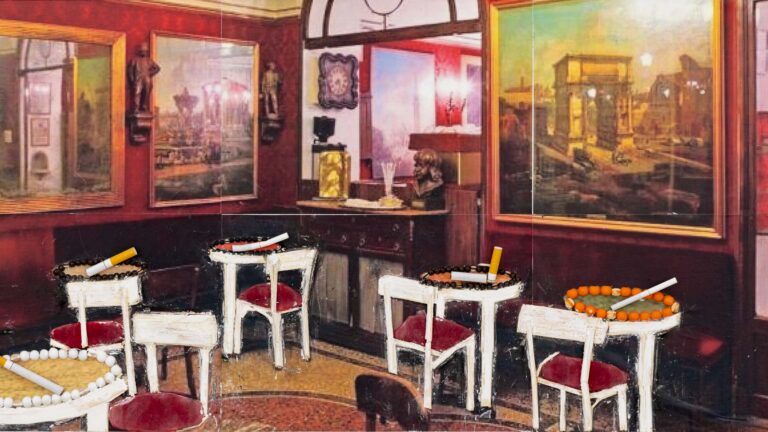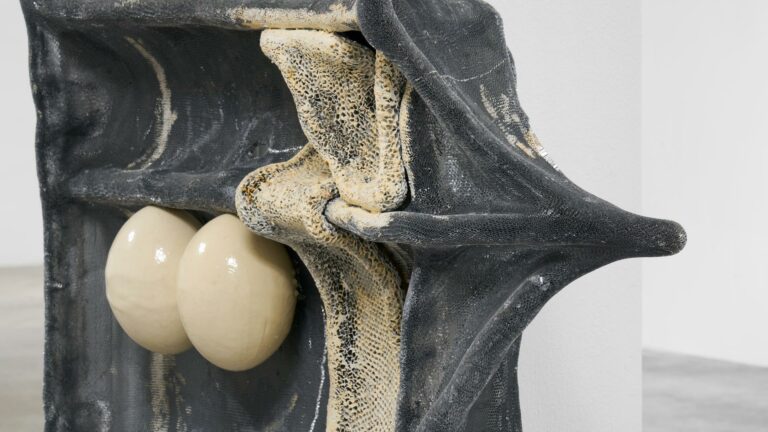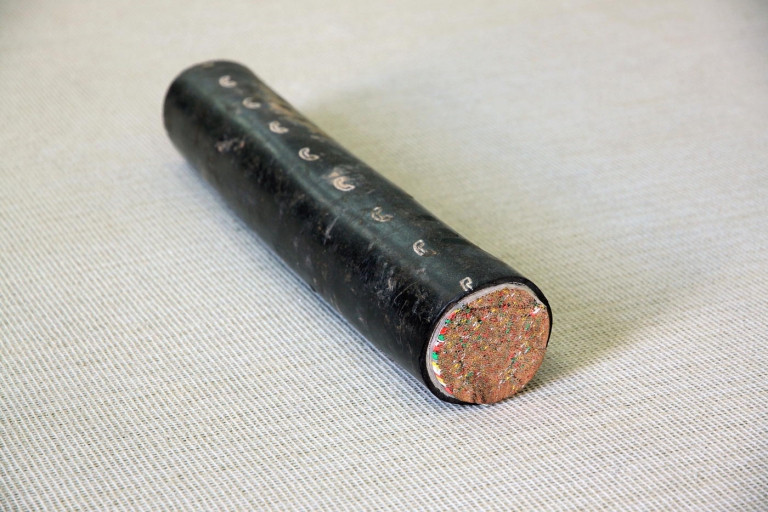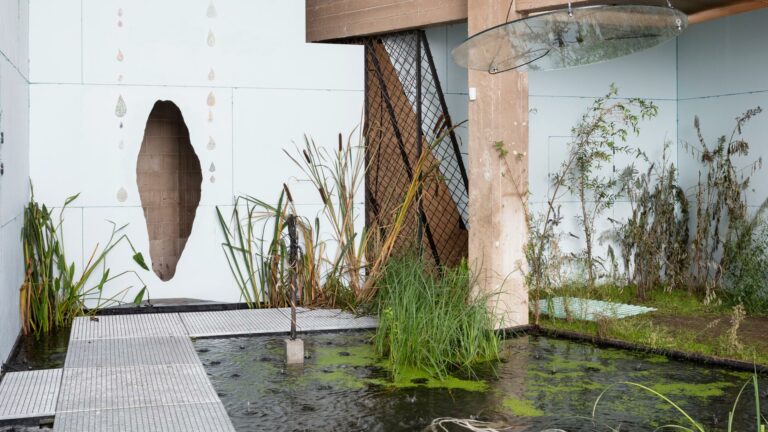Artist: Nina Canell
Exhibition title: Future Mechanism Rag Plus Two Grams
Venue: Simian, Copenhagen, Denmark
Date: June 1 – September 1, 2024
Photography: GRAYSC / All images copyright and courtesy of the artist and Simian, Copenhagen
At Simian, Nina Canell has arrived with two ongoing bodies of work, reaching downwards through the space’s subterranean architecture to consider how composite materials, subtracted and refigured, disused and repurposed from their factory-made origins, might reveal energetic potential in acts of friction.
In industrial manufacturing lies the promise of a continuously reproducible sensory smoothness, as if the new thing is emerging from a primordial vacuum, sympathetic to touch[1], but resistant to weather, time, and contingency. There is no talk of an afterlife in this promise, or of the aberrant course the thing might take along its way. Is its lifespan measured by the beginning and end of its planned obsolescence? Or is it from the instant its raw materials are extracted, to the moment it is trapped as dust in the filaments of an ostrich feather?
The nature of such spatio-temporal processes is at the core of Nina Canell’s approach. Her sculptures are evinced in chance-based exchanges as transferences and entanglements of energy. Notions of linear time become unfixed; material forms oscillate between their evolutionary and extractive conditions. Herein lies the spacetime rub: of the constructive resistance encountered as objects move under, over, and alongside one another, and the polyrhythms produced by the indeterminacy of mutable forms in relation.
In Canell’s ongoing series of vibrational sculptures, scarcely visible assemblages of jetsam bump, bob, jingle, and buzz along tenuously knotted vertical axes of string, shoelaces, cord, and wire. Disconnected from their manufactured intentions, and rendered askew by the errant course of their (dis)use, the materials are first perceptible by the sounds they make in frictional proximity. Frequency generators attached to vibration mechanisms provide the pulse to this music of detrition; ordinarily used to test electronic equipment, frequency generators are employed here as necromancer tuning devices, shaping the sine wave-forms each sculpture takes on to produce the purring bass, the humming drone, and (as in the exhibition’s namesake work, Future Mechanism Rag Plus Two Grams), the jangling percussion of an unlikely ensemble. These are “sculptures in the present tense”, to quote Canell’s frequent collaborator, Robin Watkins: the “spell of frequencies passing through in real time”[2].
Echoing Simian’s supportive columns, the sculptures conduct themselves as transperceptual[3] architecture, corresponding in the intervening space between the resonant properties of the water above, and the limestone bedrock that lies below Copenhagen. In this way, the objects in vibration are dislodged from the limitations of their single-use origins, and become part of a sonorous system of energy and movement, always unsettled, always in a state of widespread transformation.
Dust is not so much an end product, as an intermediary state of all transformation. A vagabond kind of singularity, the last of its many selves, dust accumulates with methexic infinitude, clinging to surfaces with the grip of its positive electrostatic charge. It is the bane of mechanical production, because it is the exhaust of all productivity. Perhaps it’s fitting then, that a matter so heterogeneous, so in and out of time (as old as the cosmos, as recent as today’s itch), might find itself most attracted to a prehistoric technology: the feathers of a female ostrich.
Ostriches have been domesticated by humans since the Pleistocene, but it wasn’t until the 19th century that the birds were effectively industrialized by French and British colonial powers. Farmers from Algeria to South Africa were commanded to raise ostriches as an export commodity, almost entirely for the use of their plumage and skin in European and North American fashion. At the turn of the 20th century, ostrich plumage was as valuable, ounce-for-ounce, as diamonds. In 1903, just as the first automobiles were emerging, and coupled with an exponential rise in anthropogenic dust from fossil-fuel emissions, a Johannesburg missionary and broom factory manager, Harry S. Beckner, developed the first ostrich feather duster. By the early 2000s, Ford Motors, as well as several other car manufacturers, had adopted ostrich feathers into their assembly processes, understanding the tawny brown female feathers to be unparalleled in the removal of particulate matter before the painting process.
Lacking the microscopic hooks to keep their feathers in place during flight, ostriches have instead evolved, over the last 20 million or so years, to run at speeds of up to 70km/h (incidentally, also the top speed of a Ford Model T, the first mass-produced automobile). Instead of smoothly interfacing with the atmosphere, the tiniest of breezes tarry amongst the filaments of an ostrich feather, assuring the birds stay cool even in the most foreboding savannah heat. This is thanks to thousands of barbules on each feather, which produce a negative static-electric charge that lends itself particularly well to dust collection. Ostrich feathers hold, rather than merely disperse, dust in their static grip—a single barbule can grasp a single speck of particulate matter.
Such is the departure of the latest iteration of Nina Canell and Robin Watkins’ modular video, Energy Budget. Here, a car factory assembly line is slowed to a gently gliding, if ominous pace. Time dilates as a car body lowers into the first scene, and approaches a chamber lined with towering columns of ostrich feathers. In a moment of biomimesis, the feathers tenderly skim the body as it inches forward: a macabre dance of future-past selves, in which the fluttering and swaying of each disembodied feather belies its living origins. Caught in this uneasy embrace between whispery filaments and hard steel, dust is the near-invisible protagonist, a continuous looming presence in flits of attrition. In the exhibition space, itself a decommissioned garage, the nascent car body comes to resemble the distilled material that will soon feed its engine—exoskeletal remains, all hollow eye-sockets and bottomed-out bellies. Devoid of its bodily tissue, the car body simultaneously appears as its inchoate and final state, the way a rag returns in shreds to its first unsewn form after having exhausted its initial function, passing over dirty surfaces until it too is reduced to the last of itself.
-Text by Bitsy Knox
[1] Franco “Bifo” Berardi, Precarious Rhapsody Semiocapitalism and the pathologies of the post-alpha generation, Minor Compositions, London, 2009, p. 85.
[2] Robin Watkins, Dits Dahs, 2019.
[3] Douglas Kahn and William R. Macauley, “On the Aelectrosonic and Transperception”, Journal of Sonic Studies, 2014.
Nina Canell (1979 in Växjö, Sweden) studied in Dublin, Ireland, and lives in Berlin, Germany. Selected solo exhibitions include: The Artist’s Institute, New York City; Moderna Museet, Stockholm; Hamburger Bahnhof, Berlin; Camden Arts Centre, London; Mumok, Vienna; Kunsthalle Fridericianum, Kassel, Arko Art Center, Seoul; S.M.A.K., Ghent; Kunstmuseum St.Gallen, St.Gallen, and OGR, Turin. Canell has participated in the Venice, Sydney, Gwangju, Lyon, Liverpool, Cuenca and Manifesta biennials as well as in major exhibitions at MoMA, New York City; Mori Art Museum, Tokyo; Palais de Tokyo, Paris; Museo Tamayo, Mexico City, and the Guggenheim Bilbao. Canell frequently collaborates with Robin Watkins on installations and artist’s books.

